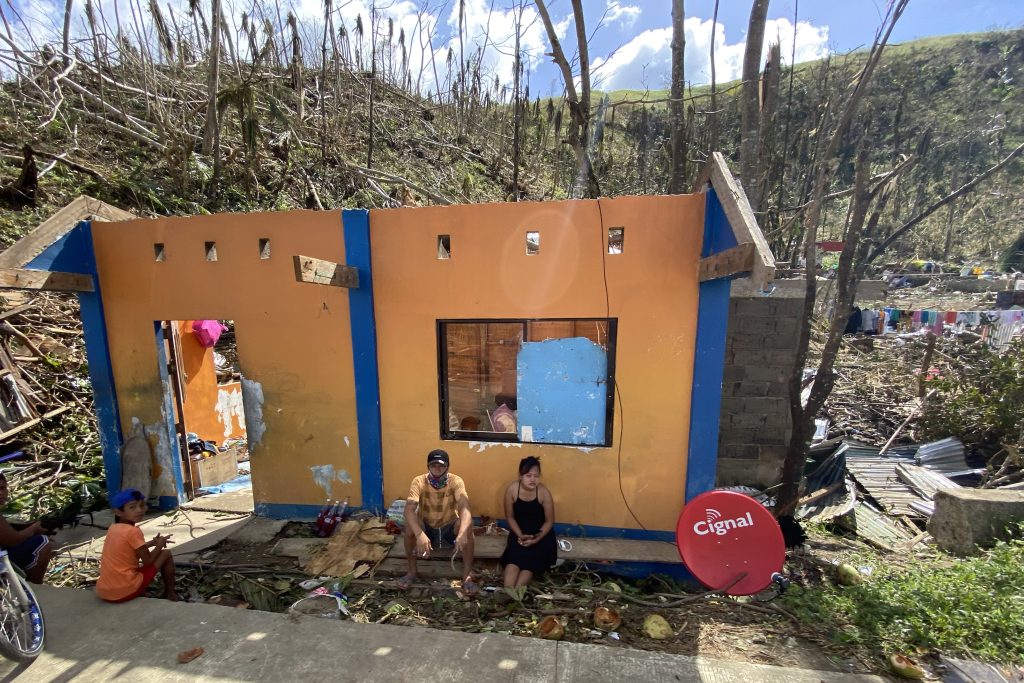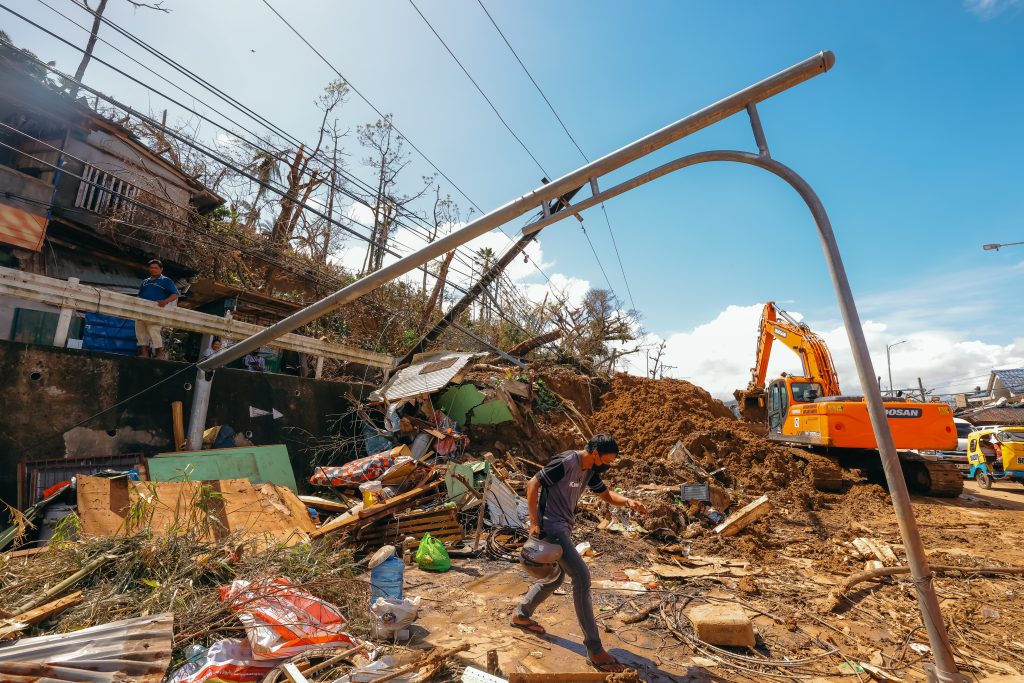
Jennifer Vetonio stands on a road in the southern Philippines begging for money and food from passing drivers. A week after Super Typhoon Rai (local name: Odette) destroyed her house, she has not received a scrap of government aid.
Hundreds of thousands of people are homeless after Rai cut a swathe through the vast archipelago last Thursday, knocking out power across entire islands and leaving desperate survivors pleading for help.
“We don’t have food, my baby has no milk or diapers,” said Vetonio, 23, in the devastated city of Surigao, on the northern tip of Mindanao island.
“I hope the government will help us — even a little aid would help us recover,” she said, holding a plastic bottle with the top cut off that she uses to collect alms from motorists.
The military, coast guard and humanitarian organizations have ramped up efforts to get food, drinking water and temporary shelter to the hardest-hit islands.
President Rodrigo Duterte has declared a state of calamity in the typhoon-affected areas, where at least 375 people were killed, freeing up funds for relief efforts and giving local officials power to control prices.
But the scale of the destruction, lack of mobile phone signal or internet in many areas, and depleted government coffers after the Covid-19 response were hampering efforts to distribute aid.
The damage caused by Rai has been likened to Super Typhoon Haiyan in 2013.
Siargao, Dinagat, Mindanao and Bohol islands are among the most devastated by the latest storm, which tore off roofs, shredded wooden buildings, felled concrete power poles and uprooted trees.
“So many houses were destroyed,” Red Cross chairman Richard Gordon told AFP.
“Destruction is destruction. It’s just the cycle of poverty all over again.”

‘Back to square one’
Rai hit the Philippines late in the typhoon season: most cyclones develop between July and October.
Anna Cloren from the state weather forecaster said the storm intensified faster than expected, and initial data showed it had dumped more rain than Haiyan.
Scientists have long warned that typhoons are strengthening more rapidly as the world becomes warmer because of human-driven climate change.
The Philippines — ranked among the most vulnerable nations to the impacts of climate change — is hit by an average of 20 storms every year.
In 2013, Typhoon Haiyan was the strongest storm ever to have made landfall, leaving over 7,300 people dead or missing.
The death toll from Rai is not expected to get anywhere close to that number.
More than 500,000 people were still in evacuation centres or sheltering with relatives, the national disaster agency said Thursday.
Thousands of acres of crops have been wiped out, fishing communities devastated and tourism operators left with no livelihood.
Long queues of people waiting to refill empty water drums or fill up motorbike fuel tanks have been seen across the affected regions.
“Humanitarian needs and gaps are high across all sectors and the humanitarian situation may further deteriorate if these needs are not addressed immediately,” the United Nations’ humanitarian office warned.
“On the first day we got maybe a kilo of rice each,” said Maria Consumo, 41, who is six months pregnant and begging for handouts on the side of a road near Surigao City.
“We think they gave priority to Siargao,” she said, referring to the popular tourist destination where Rai made landfall packing wind speeds of 195 kilometers (120 miles) per hour.
Marites Sotis, 53, said most of her family’s coconut trees were knocked down by the storm and it would take years to grow more.
“We’re back to square one,” she said.
Source: Licas Philippines
0 Comments